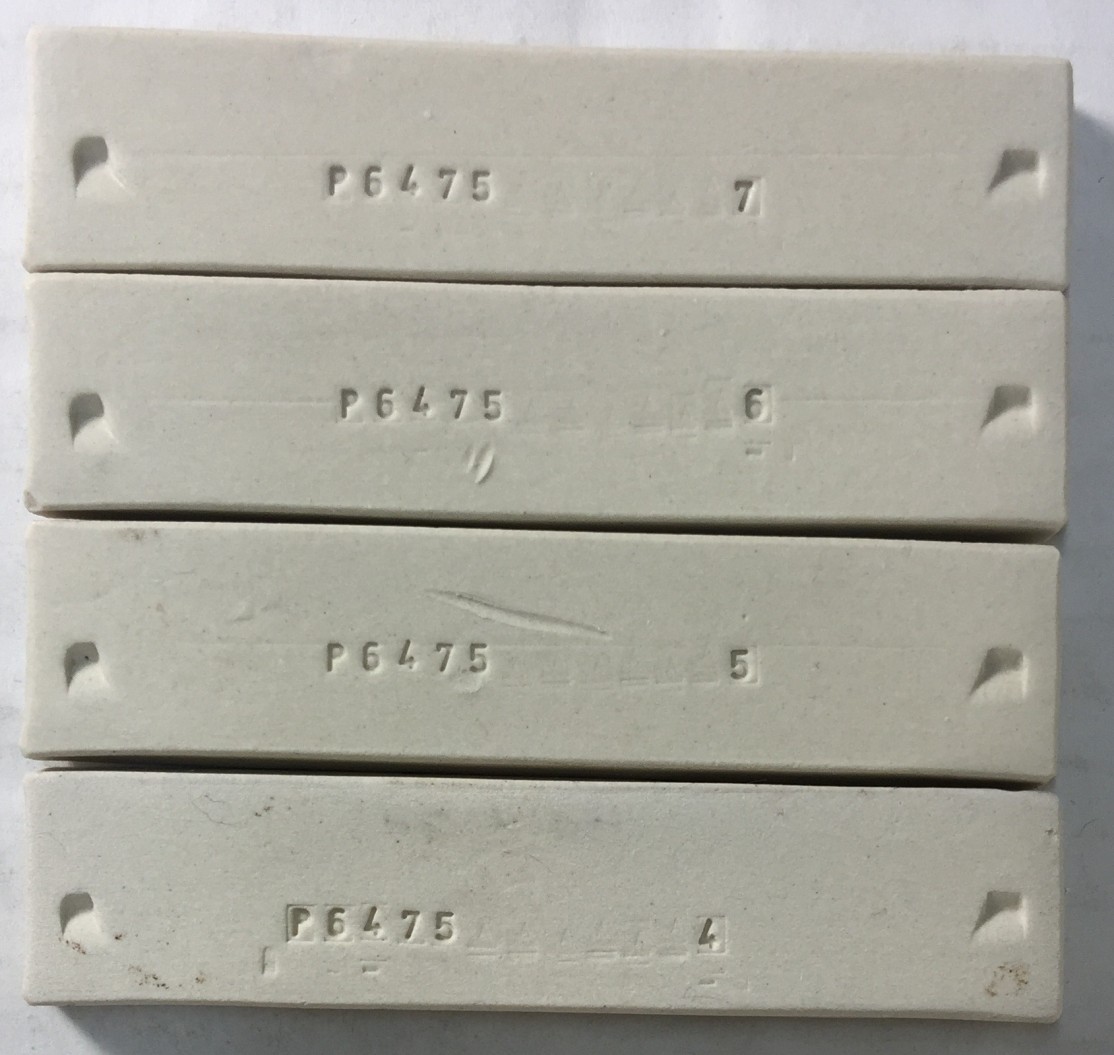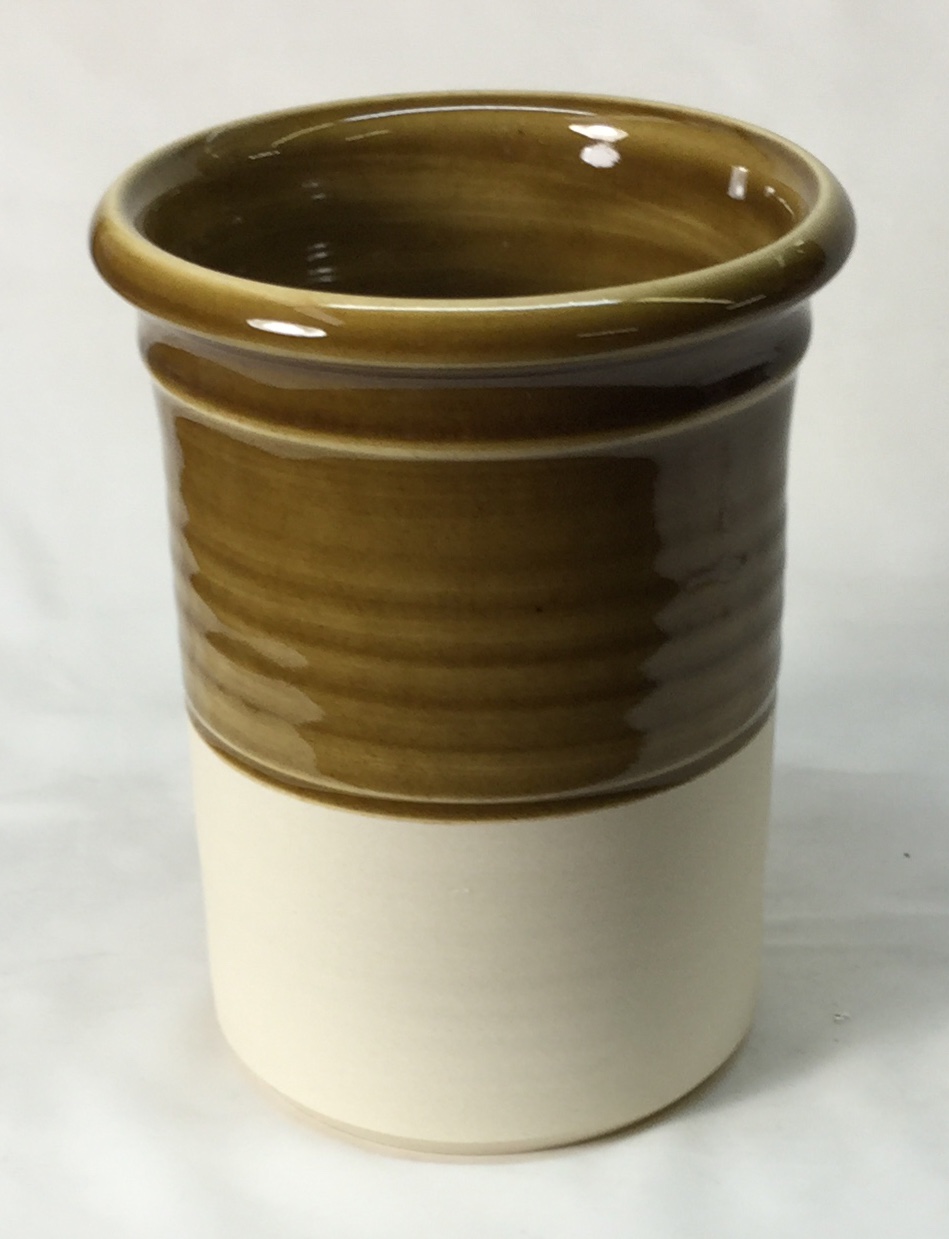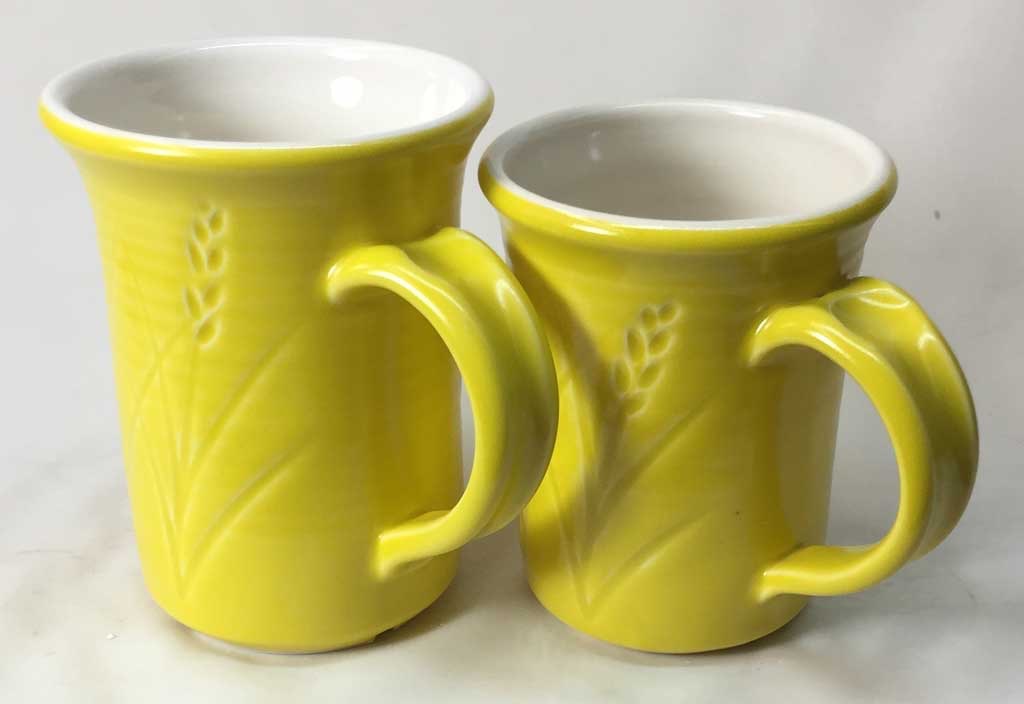P300
Description
Mid-temperature, medium plastic, vitreous, off-white burning, kaolin-only porcelain.
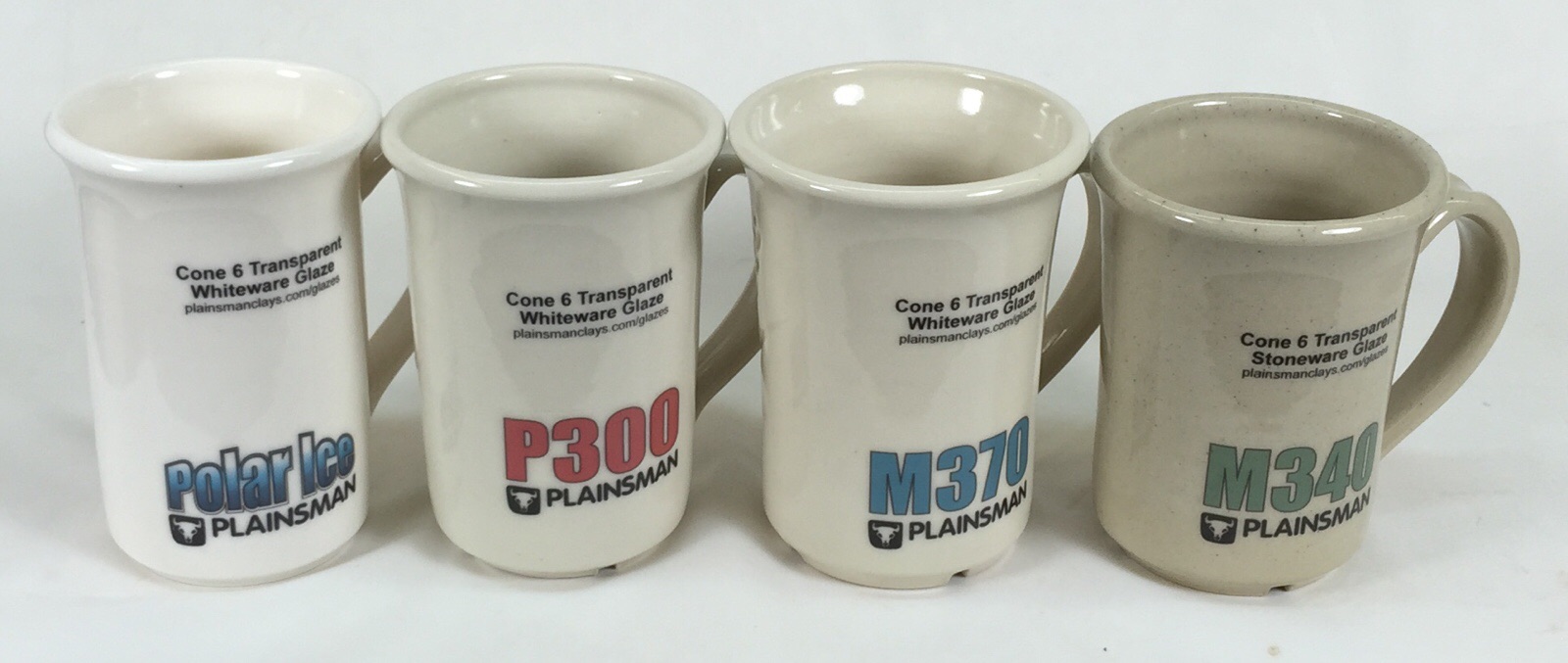
Plainsman Polar Ice, P300, M370 and M340 with G2926B Whiteware transparent glaze on the porcelain (G2916F Stoneware transparent on the M340).
P300 is a mix of plastic Georgia kaolin, nepheline syenite, 25% silica, raw bentonite (to augment plasicity) and a small amount of talc (for fired maturity control). P300 is not translucent at cone 6. It is the whitest body we can make without using expensive white plasticizers or overseas kaolins.
Process Properties
P300 is smooth, slick and fine grained. Since it is a kaolin-only porcelain, the pugged material has a distinct feel that many prefer to ball-clay-containing bodies. The added bentonite dramatically improves plasticity (as good or better than M370) and the dry strength is excellent.
Drying: Porcelains do not dry as well as stonewares or bodies with particulates. You will get the best results if the clay is not too soft, ware is not too thick, contours are smooth, wall thicknesses are even, joins are few and done with thick slip, the degree-of-wetness in all parts of a piece is kept equal throughout all stages of drying. Large pieces are best made on plaster bats so the bottom can stiffen with the walls. The worst drying performance will occur with thick ware made from very soft clay, the use of non-absorbent bats, where vessel walls are thick at the bottom and thin at the lips or edges, walls are of uneven thickness with lots of joins or abrupt angles (giving cracks a place to start) and where drying is uneven (e.g. lips and edges are permitted to stiffen early on while lower sections remain soft). Large, flat plates are the most difficult shapes to dry, it may be necessary to stretch the time out to a month or more to achieve the even drying needed for success.
Firing
P300 fires a little whiter than M370, but not nearly as white as Polar Ice. It is intended to have just a little porosity at cone 6 (for resistance to warping and crazing). It has a fairly high fired shrinkage. To prevent warping, try to make ware of even cross section and avoid profiles prone to the problem.
As with any body, bisque fire it to the highest practical temperature (high enough to burn out undesirables, but low enough to have the needed porosity for glazing). Cone 06 is a good starting point.
To get the best defect-free surface please consider using a drop-and-hold firing schedule, for example the PLC6DS schedule. If crystallization during cooling is not an issue, glazes will give optimum results if slow-cooled also (e.g. the C6DHSC schedule).
Glazing
Commercial brush-on glazes: They may or may not fit our clays (check for glaze fit using a BWIW test or similar). For brightly colored glazes (especially with layering) do a leach test (e.g. GLLE test). Consider using a transparent or white liner glaze for food surfaces.
DIY brushing glazes and dipping glazes: Begin with good transparent base recipes that do not craze, cutlery mark or leach on the body. Our G2926B glossy and G2934 matte can be purchased as powders or weighed out from their recipes (both can be adjusted for glaze fit). The two can be mixed to fine-tune matteness (e.g. 15:85 matte:gloss mix gives us a silky matte). Stains, opacifiers and variegators can be added to make almost any effect. Consider also making glazes based on GA6-A and GR6-A.
Crazing: Functional ware must remain craze-free (crazing is unsanitary and drastically reduces ware strength). Even though ware may not be crazed out-of-the kiln it may do so with time. Do cycles of a boiling water:ice water immersions (BWIW test) on a piece to test glaze fit (by stressing it to bring out any crazing or shivering tendencies).
P300 is harder to fit glazes to the M370 or Polar Ice. We have found that the G2926B recipe when made using #45 silica (325 mesh) fits well. Even better is G2926S. Failing that G2926J.Thixotropy: If you want the best application properties for one-coat dipping, consider creating a thixotropic slurry. Thixotropic glazes are creamy because they have been thinned and then gelled by the addition of a flocculant.
For slip decoration and engobes be careful to match the fired shrinkage of the slip with the body. Where we do not recommend a specific engobe recipe, consider one based on the body itself. Add 2% VeeGum or Bentonite (the extra stickiness helps it adhere well to leather hard ware). Be careful about adding fluxes (e.g. frit), this increases fired shrinkage creating a mismatch with body that can cause flaking (and can compromise engobe opacity).
If you want to develop and mix your own glazes and engobes consider getting an account at insight-live.com. You can organize a methodical development program and adopt better methods of testing (e.g. melt fluidity, thermal stress, slip-fit tests).
Casting Recipe
The standard plastic version of this body is not suitable for a casting slip (it will not deflocculate well and casts very slowly). You can mix your own P300-like casting body using the L3906 recipe. Its web page shows it with a number of variations, it is worthwhile to read the page carefully to learn the reason for each material and how to adjust the recipe for whiteness, maturity, castability, material substitution, etc. It is important to understand the principles of deflocculation, be able to measure specific gravity efficiently and have a good propeller mixer to make casting slip.
Thermal Expansion
[BodyThermalExpansion
Physical Properties
Drying Shrinkage: 5.0-6.0% Water Content: 21.5-22.5% Drying Factor: c110 Dry Density: n/a
Sieve Analysis (Tyler mesh):
48-65: 0.0-0.1% 65-100: 0.0-.1 100-150: 0.0-0.1 150-200: 0.3-0.8
Fired Shrinkage:
Cone 5: 6.0-7.0% Cone 6: 6.5-7.5 Cone 7: 7.0-8.0
Fired Absorption:
Cone 5: 2.0-3.0% Cone 6: 0.5-1.0 Cone 7: 0.0-0.25
Chemical Analysis
CaO 0.3 K2O 2.1 KNaO 0.1 MgO 0.1 Na2O 0.6 TiO2 0.8 Al2O3 25.1 SiO2 63.1 Fe2O3 0.3 FeO 0.0 LOI 6.6%
Compared to Others
The decline of the ceramic industry in North America has impacted the price, availability and quality-for-ceramics of raw materials from which porcelains are made (especially ball clays and kaolins, which have seen increases in soluble salts, foreign particles and iron specks). In addition, we do not have filter-pressing, pre-mixing and stainless-steel pugging equipment (these would drastically increase prices). While you cannot make Wedgewood-quality ware it will be far whiter and cleaner than our stonewares. Notwithstanding that, be aware that transparent glazes carry a chance of isolated specks using our standard porcelains, it is better to use white and colored glazes on these. If you absolutely need a clean, white, translucent porcelain consider using our premium products, Polar Ice and P700 (they cost more but you get much more). We are also developing engobes for low, middle and high temperature ranges, using these you can apply a porcelain-like surface of almost any color at leather hard stage and completely hide the underlying stoneware. These engobes are so opaque that a white one can completely mask a black body underneath using only one coat. So, if you can master their use (there is lots of documentation here) many new design opportunities will offer themselves.
Gallery
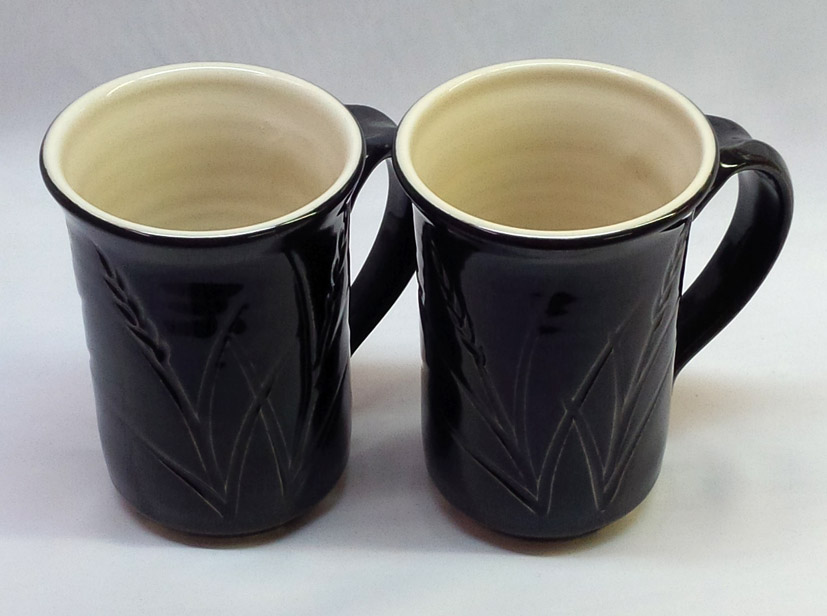
P300 (left) and M370 mugs with G2926B clear liner glaze and black outer glaze (G2926B+black stain). By Tony Hansen.
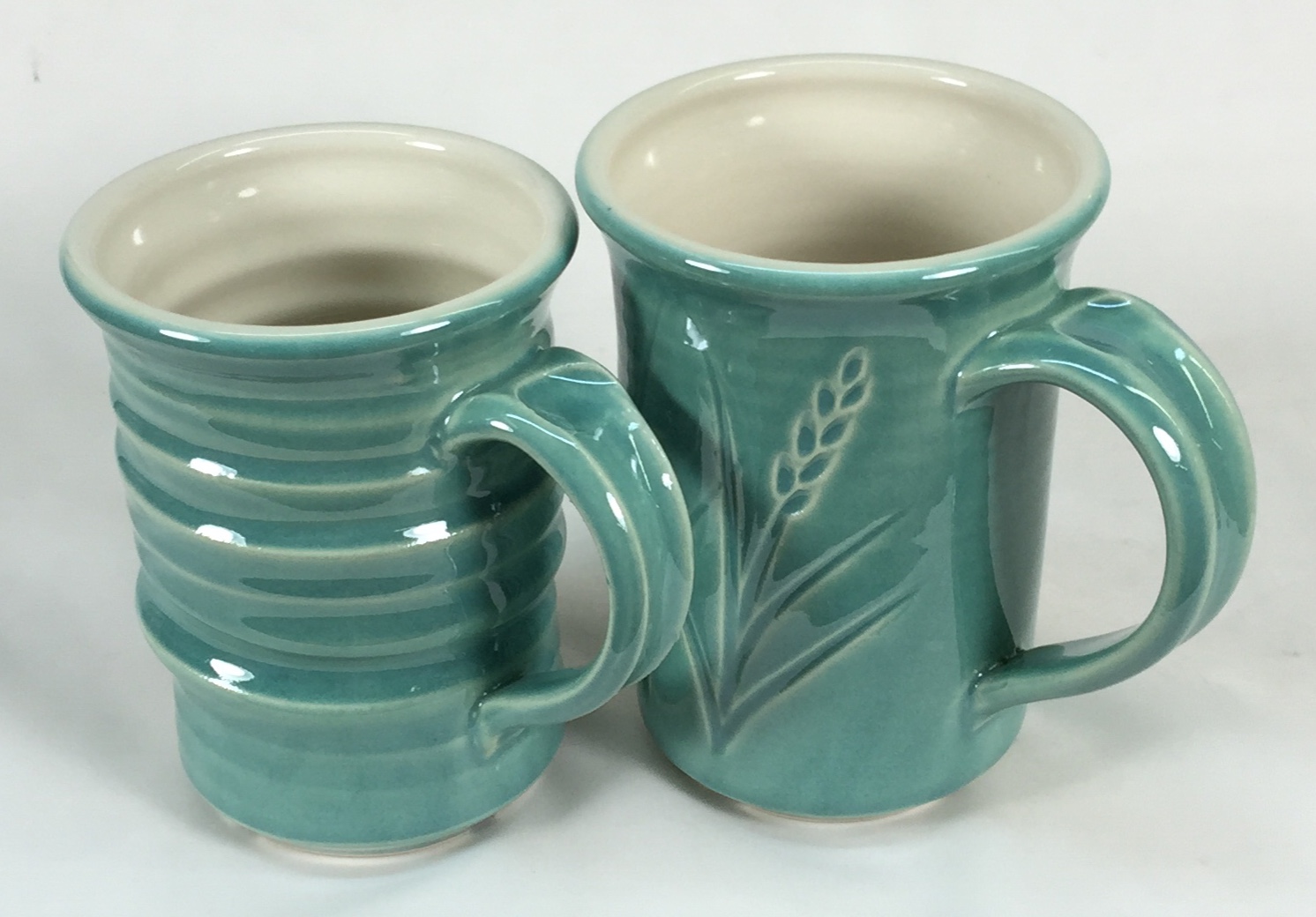
P300 and M370 Cone 6 mugs. By Tony Hansen. Outside glaze is G3806C plus copper oxide. The liner glaze is G2926B.
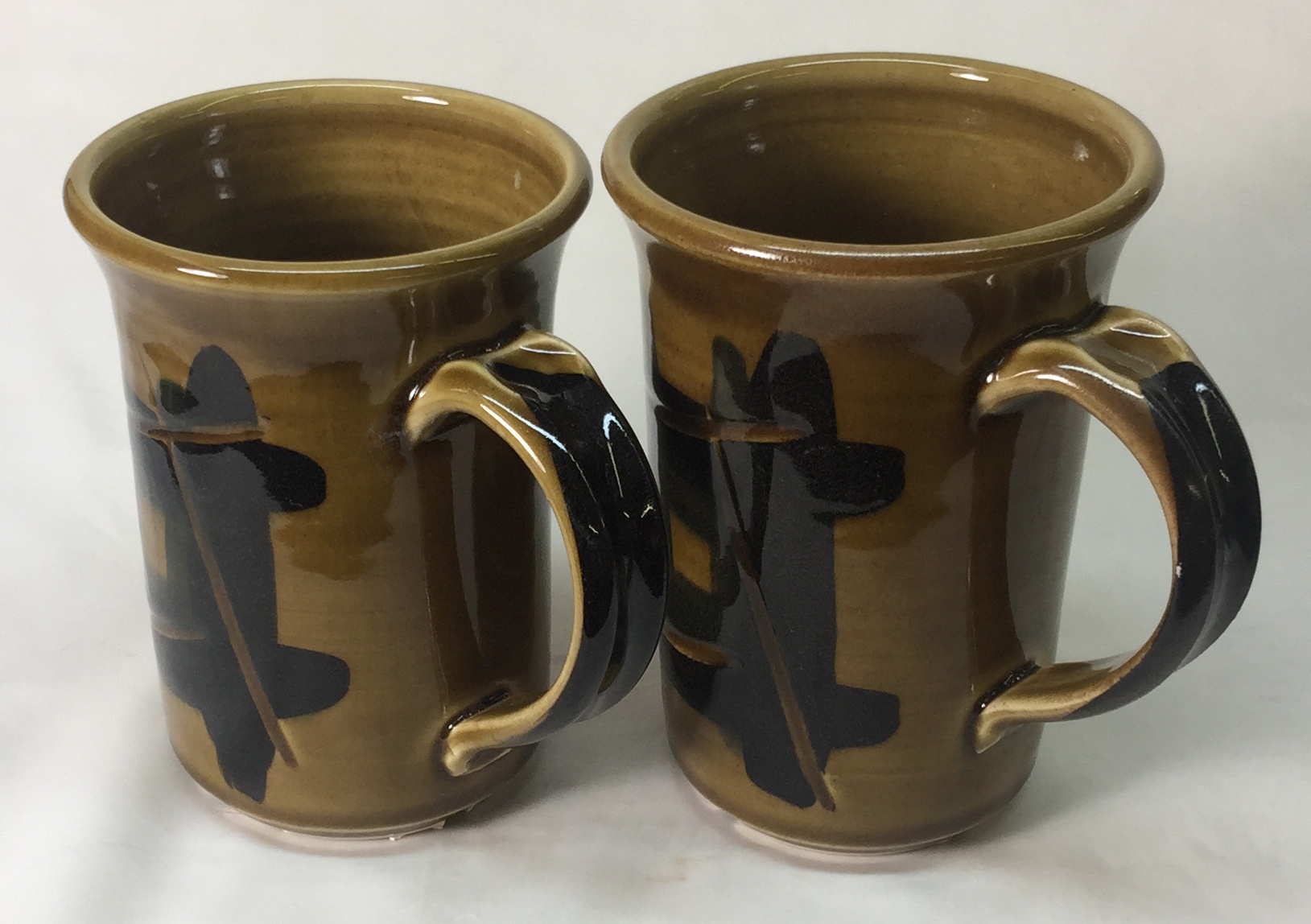
P300 and M370 mugs with GA6-A Alberta Slip at cone 6 (glaze uses Frit 3249 instead of Frit 3134). Firing soaked 30 minutes at 2100F on the way down and slow cooled 100F/hr down to 1400F.
